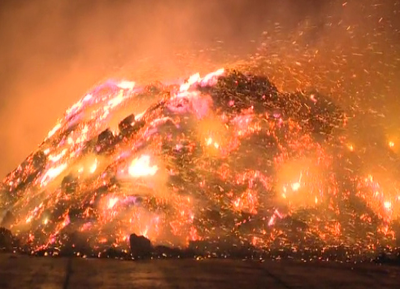
Overview
The following endothermic reaction is demonstrated for students:
Ba(OH)2 + 2 NH4Cl → BaCl2 + 2 NH3 + 2 H2O
They will easily identify it as endothermic as the temperature will drop rapidly after the solid reactants are mixed together. Students will answer some introductory questions about breaking and making bonds and what they believe occurred here.
Then students will use paper cut-outs of the atoms involved in the chemical reaction. This will allow them to indicate the initial bonds present in the reactants, to determine which bonds need to break to allow the rearrangement of atoms in the products, and finally what new bonds must be created to form the products. The goal is to determine if more bonds are broken or formed in the overall reaction, and to connect this with the entire reaction being endothermic or exothermic.
Underlying Pages
-
0. Student Directions -
Preview as Student
-
1. The Chemical Reaction -
Preview as Student
-
2. Describing the Energy Transfer -
Preview as Student
-
3. Modeling the Reaction With Paper Cutouts -
Preview as Student
-
4. Determining Endothermic or Exothermic -
Preview as Student
-
5. What if the number of bonds broken and formed are identical? -
Preview as Student
Standards
Next Generation Science Standards
- Physical Science
Computational Thinking in STEM
- Data Practices
- Modeling and Simulation Practices
- Systems Thinking Practices
